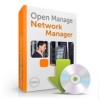Dell OpenManage Network Manager Release Notes 5.0 - Page 5
Server Start Delay, Workaround, User Account Control, Telnet sessions
 |
View all Dell OpenManage Network Manager manuals
Add to My Manuals
Save this manual to your list of manuals |
Page 5 highlights
5 Consult these files for categories you want to change, and copy those (altered) properties to the file you created in owareapps\installprops. The categories altered in this file override any others. • The internal FTP/TFTP file server is not supported on Linux. Nevertheless, the Test button remains active, and will cause an error if used in that context. (01326) • Server Start Delay-The Windows tray icon may prematurely indicate application server has started. Workaround: Wait a little, and the application server will catch up to the icon. (18778) • User Account Control-This Application requires User Account Control be disabled in Vista or any other operating systems with this capability (like Windows Server 2008). (02311) Alternatively, you can run application server as service. Another option is to run as administrator on startappserver. In Vista, right click the startappserver icon and select run as administrator. (08779) • Telnet sessions-Telnet sessions are synchronous. You cannot interrupt a command in progress with another command you send, unless you have enabled something that periodically prompts for additional commands (for example enabling line continuation prompts). • Device links to themselves may appear as squares surrounding the device in "Visualize my network" screens. (18718) • Performance capabilities have been completely reconfigured. When upgrading from previous versions, you must (re-)create dashboards from scratch. (18700) • The following require manual migration (export, then import) from previous versions: SMTP settings. Some scheduled items, . Saved topologies / visualization must be re-created. Suggestion: take a screenshot before you upgrade. User Names / Passwords, and User Groups (Roles) are not automatically reassigned and must be created manually. Group Operations have been deprecated, replaced by Adaptive CLI. Command monitors must be reconfigured to refer to Adaptive CLIs, which now can refer to external scripts. (18693) • The Organization User in Roles has no description. Its features are covered in the online help and User Guide. (18669) • OMNM drops SNMP V3 traps when the V3 traps auth (userid) is unknown. Workaround: Use an SNMP monitor, for example polling sysUptime, to get data from the device. Once this occurs, the proper auth is then known and OMNM accepts the trap. (18574) • Installation may display a JBoss null pointer exception ZipEntryContext error. This stems from a bug in JBoss 5.1, and is benign. (18612) • Internet Explorer has a problem importing MIBs. Workaround: Use a different browser to import MIBs. (HD-376) • In the Port report, the Model column refers to the model of the port. This column is not currently supported by Dell devices. (17540)














